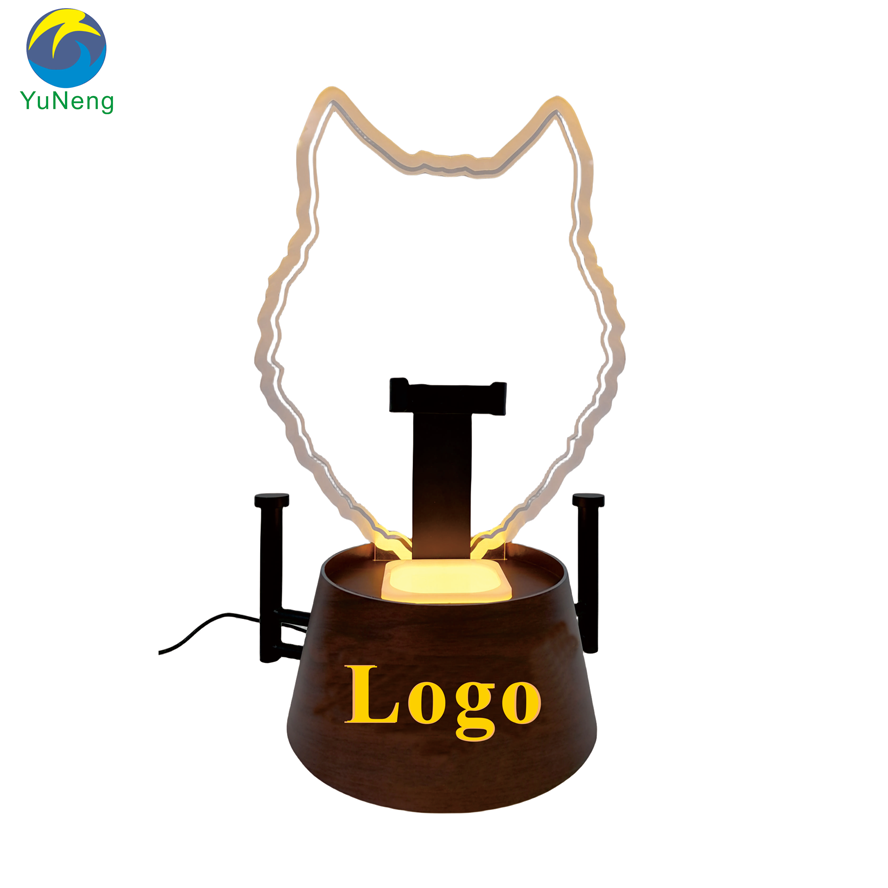Wine Light Box: Features, Applications & Maintenance
What is a Wine Light Box?
A Wine Light Box is a specialized display system designed to showcase wine bottles in retail environments, restaurants, bars, and private collections. These illuminated units combine functional lighting with aesthetic appeal, enhancing the visual presentation of wines while protecting them from harmful UV rays. Modern wine light boxes typically feature LED technology with a color temperature between 2700K-3000K, creating a warm ambiance that complements the rich colors of wine bottles without generating heat that could affect the wine's quality.
Professional wine light boxes are engineered to maintain interior temperatures below 25°C (77°F) even after continuous operation for 12 hours, ensuring no thermal impact on the stored wines. The average power consumption ranges from 15W to 30W per linear meter, making them energy-efficient solutions for commercial applications.

Key Features with Technical Specifications
1. Precision Lighting System
High-end wine light boxes utilize CRI 90+ LED strips with a lumen output of 800-1200 lm/ft, providing optimal illumination that reveals the true color of wines without distortion. The lighting angle is precisely calibrated at 120 degrees to ensure even distribution across the entire bottle surface.
2. UV-Protected Glass
The tempered glass panels filter out 99% of UV rays while maintaining 92% light transmission. This protection is crucial as UV exposure can degrade wine quality, with studies showing that just 2 hours of direct sunlight can begin altering wine chemistry.
3. Climate Control Options
Premium models incorporate thermoelectric cooling systems capable of maintaining temperatures between 12°C-18°C (54°F-64°F) with ±0.5°C accuracy. These systems operate at <45 db="" noise="" levels="">, making them suitable for quiet environments.
4. Modular Design
Commercial-grade units feature aluminum alloy frames with 2mm thick construction and modular segments that can be combined to create Displays from 1 to 10 meters in length. The weight capacity typically reaches 15 kg per linear foot.
5. Smart Control Integration
Advanced systems offer Wi-Fi/Bluetooth connectivity with mobile app control, allowing adjustment of lighting intensity (0-100% dimming) and color temperature (2700K-6500K range). Some models include NFC tags for instant product information access.
Application Scenarios
1. Premium Wine Retail Displays
In boutique wine shops, light boxes increase conversion rates by 18-22% compared to standard shelving. The strategic illumination highlights label details and bottle shapes, with studies showing customers spend 40% more time examining products in illuminated displays.
2. Restaurant Wine Walls
Fine dining establishments use backlit wine walls covering 10-30 square meters as centerpiece displays. These installations typically showcase 150-400 bottles with integrated inventory systems tracking bottle removal via RFID technology.
3. Hotel Lobby Features
Luxury hotels incorporate wine light boxes in reception areas, with average sizes of 3m x 2m displaying 60-100 premium bottles. These installations serve dual purposes as decorative elements and revenue generators through featured wine sales.
4. Private Wine Cellars
High-net-worth individuals install Custom Light Boxes in home cellars, with typical dimensions of 1.5m x 0.5m per 12-bottle display module. These often include humidity control (55-75% RH) and vibration dampening features.
5. Wine Tasting Events
Mobile light box units measuring 2m x 1m x 0.4m are used at Exhibitions, featuring quick-release mechanisms for bottle access and battery backup (8-12 hour runtime) for outdoor events.
Maintenance Guidelines
1. Lighting System Care
LED strips should be inspected quarterly for consistent output. Replace any sections showing >15% lumen depreciation or color shift. Use microfiber cloths with isopropyl alcohol (70% concentration) for cleaning diffuser panels.
2. Glass Surface Maintenance
Clean glass surfaces bi-weekly using ammonia-free cleaners and lint-free cloths. For heavily soiled surfaces, apply specialized glass cleaner with <0.1% abrasive="" content="">using circular motions.
3. Frame and Structural Care
Aluminum frames require polishing every 6 months with metal polish containing <5% abrasive="" particles="">. Check all fasteners and joints annually, tightening as needed to maintain structural integrity.
4. Climate Control Maintenance
For units with cooling systems, replace air filters every 3 months and perform condenser coil cleaning annually using CO2 blasting or non-corrosive cleaners. Check refrigerant levels biannually.
5. Electrical System Checks
Monthly inspections should verify all connections are secure and cables show no wear. Measure power draw to ensure it remains within ±10% of rated specifications. Surge protectors should be tested quarterly.
Professional servicing every 2 years is recommended for commercial installations. This includes complete system diagnostics, LED driver testing, and thermal imaging to identify potential hot spots before they develop into issues.









